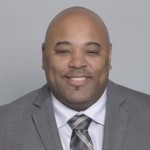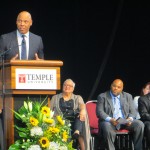Camelot Profile: Social Studies Teacher Kenneth Whisler
 Kenneth Whisler is a social studies teacher at Camelot Education’s Excel Englewood Academy in Chicago,. Kenneth was raised in Deerfield, Ill., and graduated from University of Northern Iowa with a degree in History. Prior to joining Camelot Education in August 2013, Kenneth was a summer school teacher in the Chicago Public School District.
Kenneth Whisler is a social studies teacher at Camelot Education’s Excel Englewood Academy in Chicago,. Kenneth was raised in Deerfield, Ill., and graduated from University of Northern Iowa with a degree in History. Prior to joining Camelot Education in August 2013, Kenneth was a summer school teacher in the Chicago Public School District.
Explain some themes you explore and projects students embark on in Camelot’s Social Studies curriculum.
One of my favorite things to teach in my civics class is opportunities for the students’ voicea as a tool to change things in their community. For example: as a project, I encouraged the students to write letters to their state representative to explain what they feel is affecting them in their communities. Civic engagement projects like these help students understand the social process.
How has the year been going in your classroom?
My classroom has improved a lot in terms of the students being able to grasp the curriculum since the beginning of the year. They are doing much better in learning what the content is and how to apply it throughout our various activities.
Describe your teaching style within the Camelot model. How do you think it differs from a teacher at a traditional school?
I’m student-centered and a project-based educator. In class we use current events, news articles and other relevant material for students to better relate and understand the message. Camelot gives teachers a lot of freedom because it engrains the norms in a student’s mind that he or she is here to learn. The students come ready knowing the teachers are there for them. This is a very interesting model that Camelot has.
What do you find most rewarding about teaching at Camelot?
I am a student advocate, so the most rewarding thing I find about teaching at Camelot is the connections we have with our students. Since the class sizes are small, the teachers and students build relationships that have students looking forward to coming to school.
How do you keep your students engaged?
I use the present to allow students to learn about the past. For instance, this year there have been a lot of issues throughout the country regarding civil rights. I have found that opening communication provides students a rich understanding while keeping them engaged and allowing them to voice their concerns.



